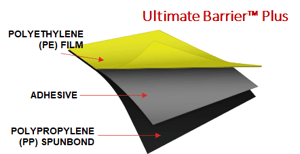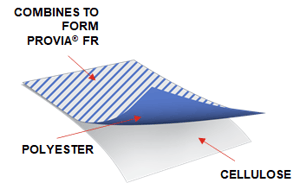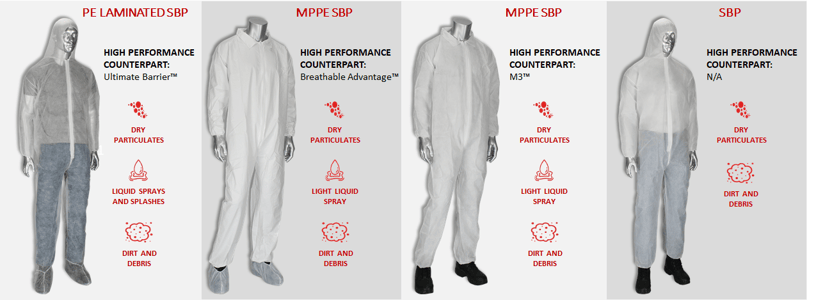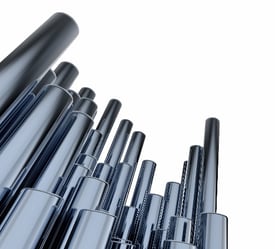- HOME
- PRODUCTS
- Arm Protection (119)
- Cold Stress (1)
- Critical Environment (170)
- Electrical Safety (133)
- Emergency Responder (37)
- Ergonomics (12)
- Eye Protection (356)
- First Aid (17)
- Hand Protection (1447)
- Head Protection (103)
- Hearing Protection (49)
- Heat Stress (37)
- Protective Clothing (454)
- Respiratory Safety (44)
- Warning Beacons (28)
- BRANDS
- CHANNELS
- Sales Tools
- NEWS, ARTICLES & EVENTS
- Log in or Sign Up
- PRODUCTS
- /// Hand Protection
- /// Hand Protection
- Chemical Resistant Gloves
- Cold Protection Gloves
- Cut Resistant Gloves
- Disposable Gloves
- Fabric Work Gloves
- General Purpose Gloves - Coated
- General Purpose Gloves - Uncoated
- Heat Protection Gloves
- High Performance Gloves
- Leather Drivers Gloves
- Leather Palm Gloves
- Parade & Uniform Gloves
- /// Head Protection
- /// Eye Protection
- /// Hearing Protection
- /// Respiratory Safety
- /// Protective Clothing
- /// Arm Protection
- /// Heat Stress
- /// Warning Beacons
- /// Cold Stress
- /// Ergonomics
- /// First Aid
- /// Welding Protection
- /// Controlled Environment
- /// Electrical Safety
- /// Emergency Responder
- /// Hand Protection
- BRANDS
- CHANNELS
- SALES TOOLS
Reusable vs. Disposable – Using The Right Garment For The Right Job
Disposable garments or reusable garments – which choice is right for you? There has always been back-and-forth about whether reusable or disposable garments are best for the workplace. Safety managers want the most cost-effective and sustainable protection for workers, but the right choice is not always apparent. That’s because like most PPE, choosing the correct garment depends on the conditions and applications. So how do you know if you’re choosing the correct garment? Let’s take a moment to break it down.
DISPOSABLE GARMENTS - THE UNSUNG HEROES IN A WORLD OF HEAVY DUTY JOBS
We’ve all been there. The dirty jobs. The messy jobs. The ‘there’s no way that stain is coming out’ jobs. In all of these applications there’s one factor in common: no one wants to spend money on a garment that has a high probability of being compromised due to the nature of the work. However, workers still need a garment that can stand up to the rigors of that job. Let’s outline some situations that warrant disposable garments, and what types of garments are best suited to those applications.
 Heavy Duty – From remediation to construction, there are just some jobs that put a lot of wear-and-tear on PPE. Workers need protection from dust, grime and liquids while having the confidence that the garment can offer them a full range of movement, keep them comfortable and stand up to the rigors of the job. Disposable garments can offer excellent durability and protection against liquids while still being breathable and comfortable for the worker.
Heavy Duty – From remediation to construction, there are just some jobs that put a lot of wear-and-tear on PPE. Workers need protection from dust, grime and liquids while having the confidence that the garment can offer them a full range of movement, keep them comfortable and stand up to the rigors of the job. Disposable garments can offer excellent durability and protection against liquids while still being breathable and comfortable for the worker.
Explore the Posiwear® M3™ line for breathable protection against grime and incidental liquid contact
Explore the Posiwear® Breathable Advantage™ line for breathable protection against liquid spray and splash
 High-risk – When handling chemicals or being exposed to biological agents, workers need reliable and tested barrier protection. Given the hazardous nature of the work, suits in these applications are typically worn once, so safety managers need reliable protection that won’t break the bank. To protect against the most hazardous blood-borne pathogen and chemical contact, disposable garments require three things: reinforced seams, a heavier nonwoven fabric and a material configuration that provides excellent barrier protection.
High-risk – When handling chemicals or being exposed to biological agents, workers need reliable and tested barrier protection. Given the hazardous nature of the work, suits in these applications are typically worn once, so safety managers need reliable protection that won’t break the bank. To protect against the most hazardous blood-borne pathogen and chemical contact, disposable garments require three things: reinforced seams, a heavier nonwoven fabric and a material configuration that provides excellent barrier protection.
Explore the Posiwear® Ultimate Barrier™ and Ultimate Barrier Plus™ line for tested protection against chemicals and blood-borne pathogens
 Preservation – Sometimes using disposable clothing is about preserving the integrity of the PPE being worn underneath the garment, the most common occurrence being flame resistant disposable clothing. While the garment itself is self-extinguishing, it is not the primary protection against heat and flame. Instead, it’s meant to be worn over the top of primary flame-resistant clothing to protect against dirt and oil. The big question is, what if the disposable FR garment does get compromised while on the jobsite? Is it still safe to use? The answer is that any FR clothing that has been contaminated with flammable materials or liquids should be discarded. It is not fit for further wear, making it practical to choose an FR disposable garment that is repellent to flammable materials. The disposable garment can then be used for a longer period while keeping workers protected.
Preservation – Sometimes using disposable clothing is about preserving the integrity of the PPE being worn underneath the garment, the most common occurrence being flame resistant disposable clothing. While the garment itself is self-extinguishing, it is not the primary protection against heat and flame. Instead, it’s meant to be worn over the top of primary flame-resistant clothing to protect against dirt and oil. The big question is, what if the disposable FR garment does get compromised while on the jobsite? Is it still safe to use? The answer is that any FR clothing that has been contaminated with flammable materials or liquids should be discarded. It is not fit for further wear, making it practical to choose an FR disposable garment that is repellent to flammable materials. The disposable garment can then be used for a longer period while keeping workers protected.
Explore the Posiwear® Flame Resistant line for highly repellent disposable FR protection
Sanitation – Reliable all-day protection and comfort are essential for workers in janitorial and sanitation applications. With daily use and protection needed from a wide range of hazards, these applications are ideal for economy disposables that can be chosen based on the day’s applications.
Explore PIP® Economy Disposables for an affordable range of liquid and particulate protection

All of these environments and applications are associated with work that, due to its very nature, eventually leads to garments being compromised. This inevitability is the very reason why so much research and development has gone into the creation of disposable garments and various material configurations so that workers can have the trusted protection they need for every heavy-duty application.
REUSABLE GARMENTS - PRECISE MATERIALS FOR PRECISE WORK
While disposable garments are configured for heavy-duty jobs where the risk of being compromised is high, reusable garments are on the other end of the spectrum. These highly technical garments are designed for durability and comfort in an entirely different realm of environments and applications. When used correctly, the long-term use associated with these garments can lead to reductions over disposables in the areas of cost and sustainability. However, to reap these benefits most effectively, these garments need to be used within the correct applications.

Controlled Environments – Worker safety is a primary focus and function of PPE, however when it comes to environments such as cleanrooms, product protection is of equal importance. Materials and objects that are sensitive to particulates require specialized contamination control garments made of high density, non-linting fabrics that prevent particulates from penetrating the garment and stop contaminants like skin cells and bacteria from escaping into the controlled atmosphere.
Explore Uniform Technology® Cleanroom Garments for ISO cleanroom-rated particulate control

Electronic Manufacturing – Similar to environments that control particulates, many electronic manufacturers require PPE that controls the flow of static buildup to discharge safety to ground instead of building up and discharging into sensitive electronic products. Any PPE that incorporates at least one static control technique is labeled Safe from Electrostatic Discharge, or ESD Safe. The clothing used in the ESD-sensitive environments incorporate a continuous conductive layer of material, like carbon, across the fiber axis of the garment. This offers a complete and high static control capacity that is not only resistant to washing, wear and abrasion, but also prevents the attraction of dust and contaminants.
Explore Uniform Technology® ESD-Safe Garments for high performance conductive clothing
 Contamination Control – With the high-risk associated with contamination in multiple industrial environments, it’s only logical that the advanced technology in reusable garments be applied to one of the highest contamination-risk industries out there: the food industry. Reusable garments in the food industry are nothing new but, with the growing risk of food-borne illness, industries are looking at new and effective ways to combat food contamination. Utilizing the high filtration efficiency and tested liquid resistance of densely woven fabrics keeps bioburden contained while workers stay dry and comfortable. Combined with antimicrobial additives, these garments provide a further measure of protection from food supply contamination.
Contamination Control – With the high-risk associated with contamination in multiple industrial environments, it’s only logical that the advanced technology in reusable garments be applied to one of the highest contamination-risk industries out there: the food industry. Reusable garments in the food industry are nothing new but, with the growing risk of food-borne illness, industries are looking at new and effective ways to combat food contamination. Utilizing the high filtration efficiency and tested liquid resistance of densely woven fabrics keeps bioburden contained while workers stay dry and comfortable. Combined with antimicrobial additives, these garments provide a further measure of protection from food supply contamination.
Explore Uniform Technology® Antimicrobial Barrier Garments for safety solutions in the food industry

Industrial Barrier Protection – From paint shop to manufacturing and assembly, there are a wide range of applications that require protection for the worker and the product. Industrial paint shops require effective barrier protection to keep the worker safe, but also low-linting containment to preserve the integrity of the product. Likewise in manufacturing and assembly, specific industries need a certain level of lint, debris and bioburden control to ensure the clean handling and manufacture of products. Employing high performance fabrics with dense weaves ensures that the product is manufactured cleanly and safely in both wet and dry applications.
Explore Uniform Technology® Barrier Garments for industrial paint shop and clean handling applications
In all of the applications discussed here, one big question stands out: can these products be substituted for each other in different applications? The answer is yes in instances that don’t require specific environmental protections such as cleanrooms, ESD and flame resistance. Converting from disposable to reusable coveralls in the correct applications could dramatically decrease costs and usage, but that’s assuming an application that would promote long-term use of the garment.
For example, if a manufacturing plant had inspection workers switch to reusable garments, the potential in decreased usage could reach as low as 20 reusable coveralls for every thousand disposable coveralls and as much as a 27% carbon footprint reduction. On the other hand, if a remediation company were to convert to reusable garments, costs would go through the roof because reusable garments would not hold up to the rigors of the work or could become contaminated and need to be laundered, which would increase costs further.
Using these garments correctly in the right applications increases worker safety and performance while decreasing costs and OSHA reportables. Interested in exploring the right garments for your applications?
Learn more about PIP® Uniform Technology® reusable garments and Posiwear® disposable clothing, or click here to contact your local PIP® rep today!
Unraveling the Dynamics of ESD Safety
When it comes to Electrostatic Discharge (ESD) Safety, it’s all about control – static control. ...The Psychology Behind Effective Food Safety Culture
What’s the first thing you think of when you see a firefighter helmet? If your answer was hero,...What is Double Hearing Protection and When Would You Need It?
You might be asking yourself if double hearing protection is something you should be considering....Proposition 65 | Privacy Policy | Contact Us | Full Site
© 2012-2026Protective Industrial Products, Inc. All rights reserved.








